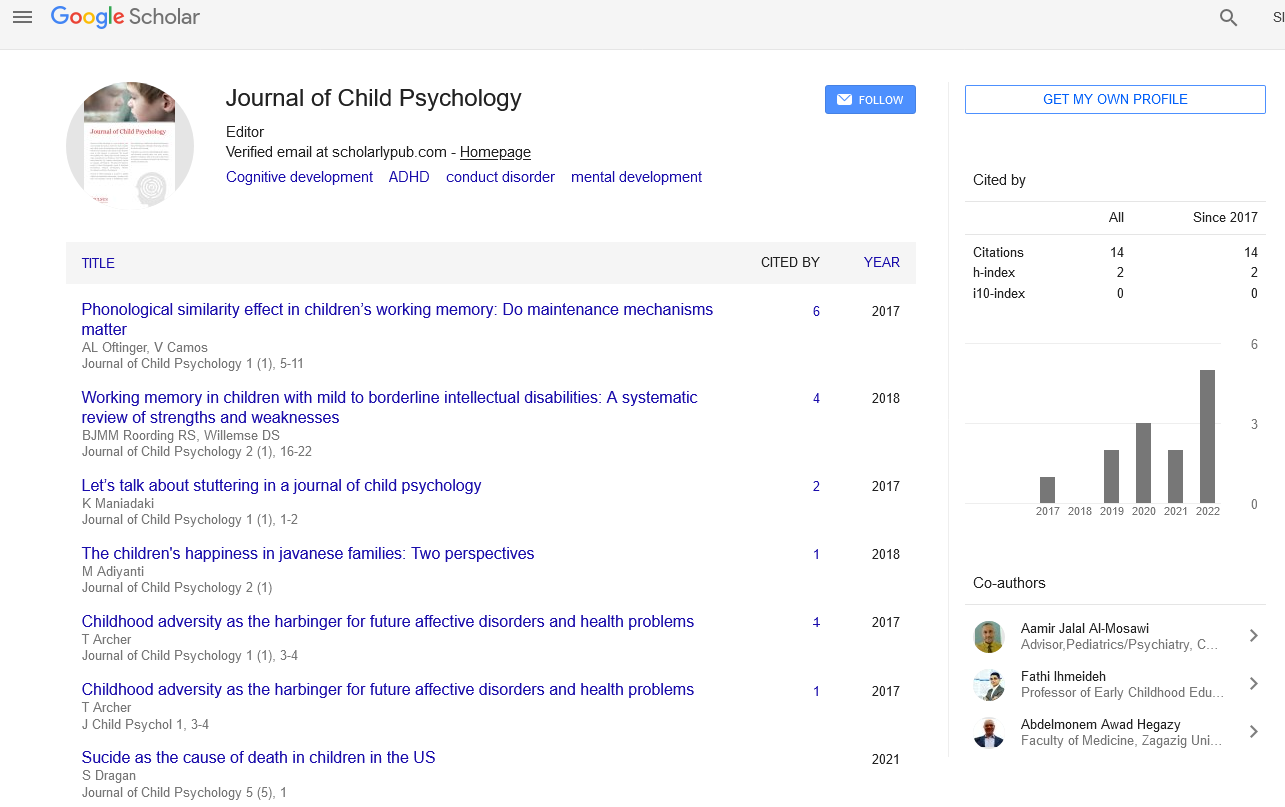Obsessive Compulsive Disorder and its Treatment in Children
Received: 05-Jan-2022 Accepted Date: Jan 18, 2022; Published: 28-Jan-2022
This open-access article is distributed under the terms of the Creative Commons Attribution Non-Commercial License (CC BY-NC) (http://creativecommons.org/licenses/by-nc/4.0/), which permits reuse, distribution and reproduction of the article, provided that the original work is properly cited and the reuse is restricted to noncommercial purposes. For commercial reuse, contact reprints@pulsus.com
Introduction
Obsessions are intrusive thoughts, fears and urge that prevails again and again and become out of control. These obsessions typically cause a lot of anxiety and worry to the child. Obsessions may include worrying about germs, fear about bad things happening, fear about doing something wrong, feeling about things to be just right as expected, disturbing thoughts or images of a particular nature. Compulsions (also called as rituals) are the response behaviors that the child intends to feel to compulsorily do to get rid of the unsettling feelings caused by the obsessions. The child believes that exercising these compulsions will prevent worst things from happening. Compulsions may include excessive checking or re checking the things, excessive washing or cleaning, repeating actions just to make the things right as imagined, arranging things in a certain manner several times, excessive praying, excessive mental reviewing, frequent confessing or apologizing, seeking excessive reassurance. Obsessive compulsive disorder (OCD) might start at any time between the ages of 8 to 12 or in between the end of teen age and starting stage of adulthood
The compulsive actions may not be interpreted during the first signs but later on the symptoms may become visible by the repetitive action behaviors of the child. An OCD diagnosis is recommended when the compulsions become more severe and more time consuming and interfere in the day to day activities of the child and parent or caregiver. More over these symptoms start gradually during the course of several weeks or months. If the symptoms start suddenly with a change in behavior and mood, then it should be considered as a pediatric OCD affected by an infection, which stimulates auto immune disorder into attacking brain known as Pediatric Autoimmune Neuropsychiatric Disorders Associated with Streptococcal Infections or PANDAS.
The causes of OCD in children may include abnormalities in the brain structure in the areas of frontal cortex and subcortical structures of the brain, early life trauma like sexual assault, genetics and stress related difficulties.
The recommended treatment for OCD is a combination of individual cognitive behavioral therapy (CBT) rarely along with selective serotonin reuptake inhibitors (SSRI’s). In the behavioral therapy the child modified exposure and prevention therapy (ERP) is administered to the children with OCD. During the treatment with ERP the child is exposed to his obsessions in a controlled environment and slowly reducing the compulsions by reducing their fears and anxiety. If the OCD is caused by PANDAS, the medical treatment might include antibiotics such as penicillin and azithromycin, Tonsillectomy, Plasma exchange, Intravenous immunoglobulin, NSAIDs and corticosteroids. In case of severe OCD the physician may suggest the use of cognitive behavioral therapy (CBT) and selective serotonin reuptake inhibitors (SSRI’s) such as fluvoxamine, fluoxetine, sertraline. These drugs help reduce children’s anxiety levels, but to be used cautiously as they might cause suicidal thoughts inn children ingesting them. Educating the parent or caretaker on the OCD can help in the speedy recovery of thee child. Treatment works wonders when the parent or caregiver also gets involved in the therapy process.





